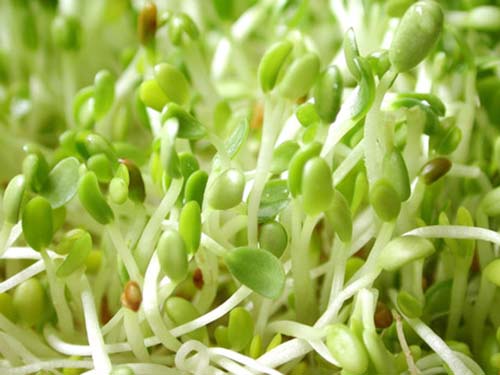Genetically alfalfa: Will definitely infect?
Many American agricultural experts claim that the infection of transgenic alfalfa on traditional grass is inevitable, although the US Agriculture Secretary recently announced that it is allowed to plant the plant and confirm it. The government will take necessary measures to prevent infection.
America will allow genetically modified alfalfa to be planted
Recent genetically modified alfalfa advocates urged the US Department of Agriculture to allow the use of genetically modified alfalfa, created by Monsanto Company, as a feed for livestock, because of its use. This grass helps farmers grow more grass on each land area and contributes to keeping food prices low.
The decision of the US Department of Agriculture in late January to reduce control over genetically modified alfalfa is the latest move in the long-term debate. A federal court in 2008 imposed a ban on lucerne transformation, because the Ministry of Agriculture did not fully consider its impact on the environment and health. The US Supreme Court lifted the ban last year, saying the court's decision had gone too far.

Alfalfa sprouts.
When announcing the decision to loosen transgenic alfalfa control, Minister Vilsack said, the agency will take measures to ensure that the transgenic alfalfa will not cross-cross with organic grass. genetically modified. The Ministry of Agriculture official declined to answer the question of what specific measures would be, but only said that a document posted on the ministry's website was specifically addressed.
Minister Vilsack's announcement stated that their plans include expanding a program in Washington state to produce many genetically modified lucerne seeds and maintain purebred seed supplies.
In addition, agricultural genetic scientists have been ordered to find non-genetically alfalfa protection measures, just like the measures taken with corn. Mr. Vilsack also promised to spend $ 1 million on pollination research to find out how much of a buffer between genetically modified and conventional grasses would be needed to prevent infection.
However, refugees claim that the mass planting of transgenic alfalfa will make their pollen more traditional. Although alfalfa is mostly dried for animal feed, many consumers do not want to eat meat and milk from animals that eat genetically modified food.
Government measures are not enough to prevent infection because cross-pollination will inevitably occur despite measures to prevent it, agronomist Jeff Wolt works at the Center for Seed Science, State University. Iowa, said.
Alfalfa persists year after year without replanting each year, but it is intercropped with other crops every few years. The pollination process of alfalfa is more complicated than many other crops like corn, because pollination does not depend much on insects.
Alfalfa is grown on an area of more than 8 million hectares in nearly all US states .
If insects do not carry pollen from the genetically altered grass to non-genetically modified grass, the infection still occurs if the non-GMO seed is accidentally mixed with the transgenic seed, or modified grass. The gene was brought to the field and planted in the field. According to Wolt, the problem for farmers is that many buyers do not accept buying infected grass.
Corn, soybean, oilseed, and rice were all infected when the genetically modified variety was introduced. Measures to protect non-genetically engineered plants and organic plants must be implemented before genetically engineered alfalfa is reduced to control, Kristina Hubbard, director of the Alliance advocating organic crops (USA), to speak.
The Union's biggest concern is how to help non-genetically engineered farmers and organic plants suffer no damage from infection. They argue that the company developing and launching this crop is responsible for the damage caused by the infection process.
Alfalfa is grown on an area of more than 8 million hectares in nearly all US states. This is the fourth most popular crop in the United States, after corn, soybeans and wheat.
- Genetically modified plants still cause doubts
- Arid lands, Saudi Arabia responds by
- Genetically modified food in Vietnam ever since?
- Genetically modified salmon in the US is controversial
- Things you should know about GMO genetically modified foods
- Raising awareness about genetically modified organisms
- Genetically modified insects threaten genetically modified plants
- Using genetically modified foods is prone to cancer
- He called on the EU to approve genetically modified corn by voting
- Legislation of genetically modified corn harmful
- Countering genetically modified corn causes cancer in mice
- Genetically modified plants and the future in Vietnam
 'Barefoot engineer' invents a pipeless pump
'Barefoot engineer' invents a pipeless pump Process of handling dead pigs due to disease
Process of handling dead pigs due to disease Radiometer
Radiometer Warp Engine: Technology brings us closer to the speed of light
Warp Engine: Technology brings us closer to the speed of light